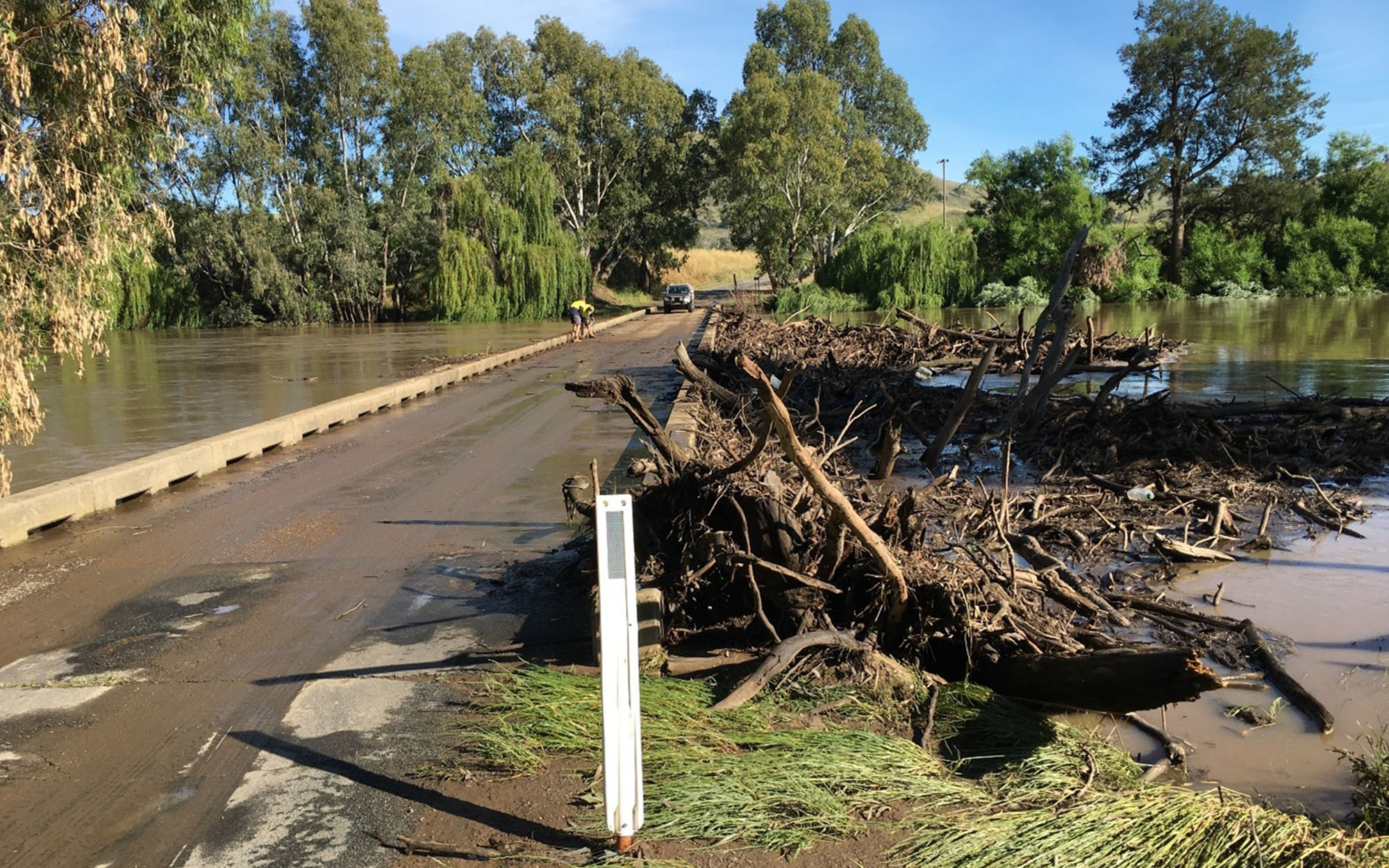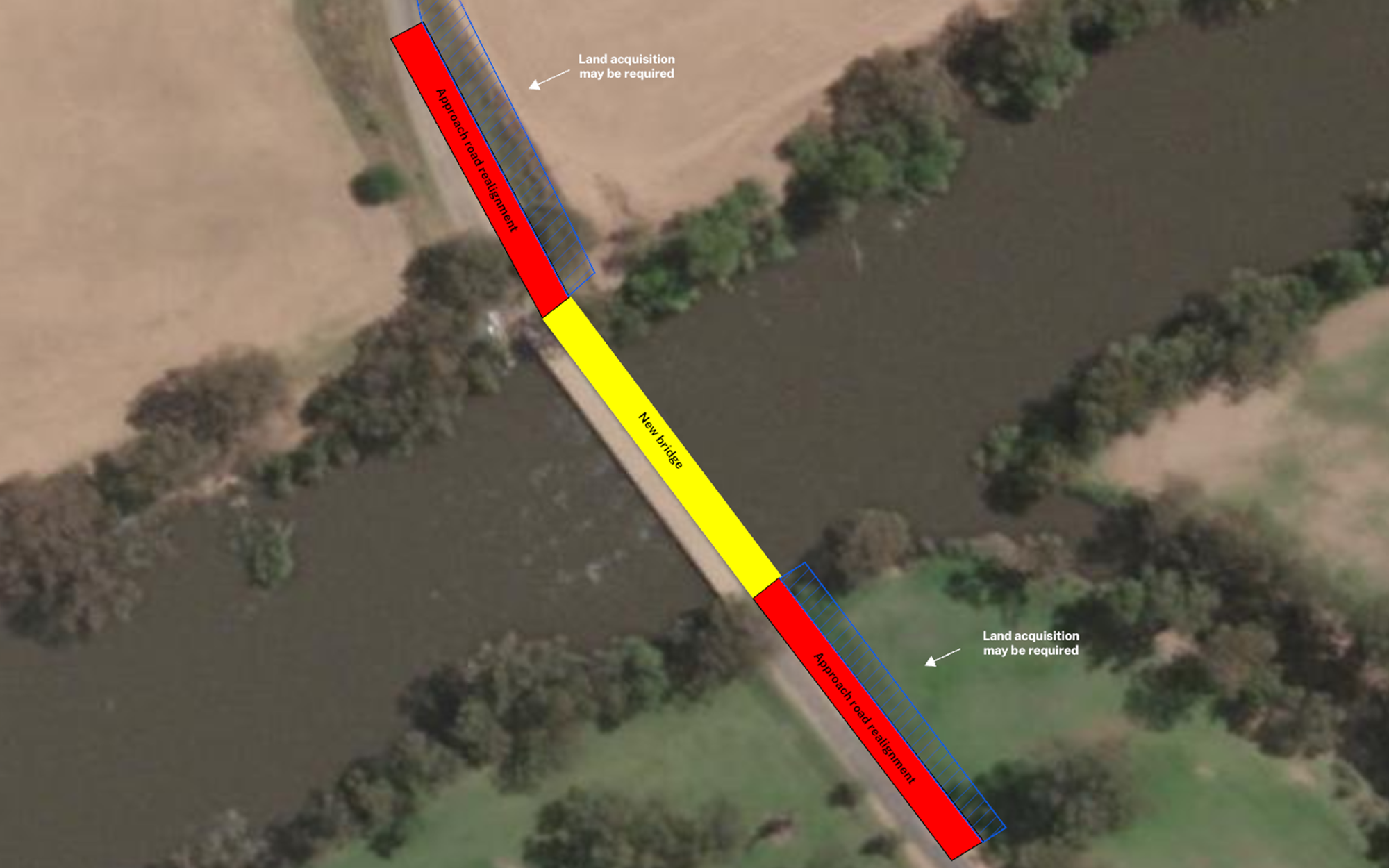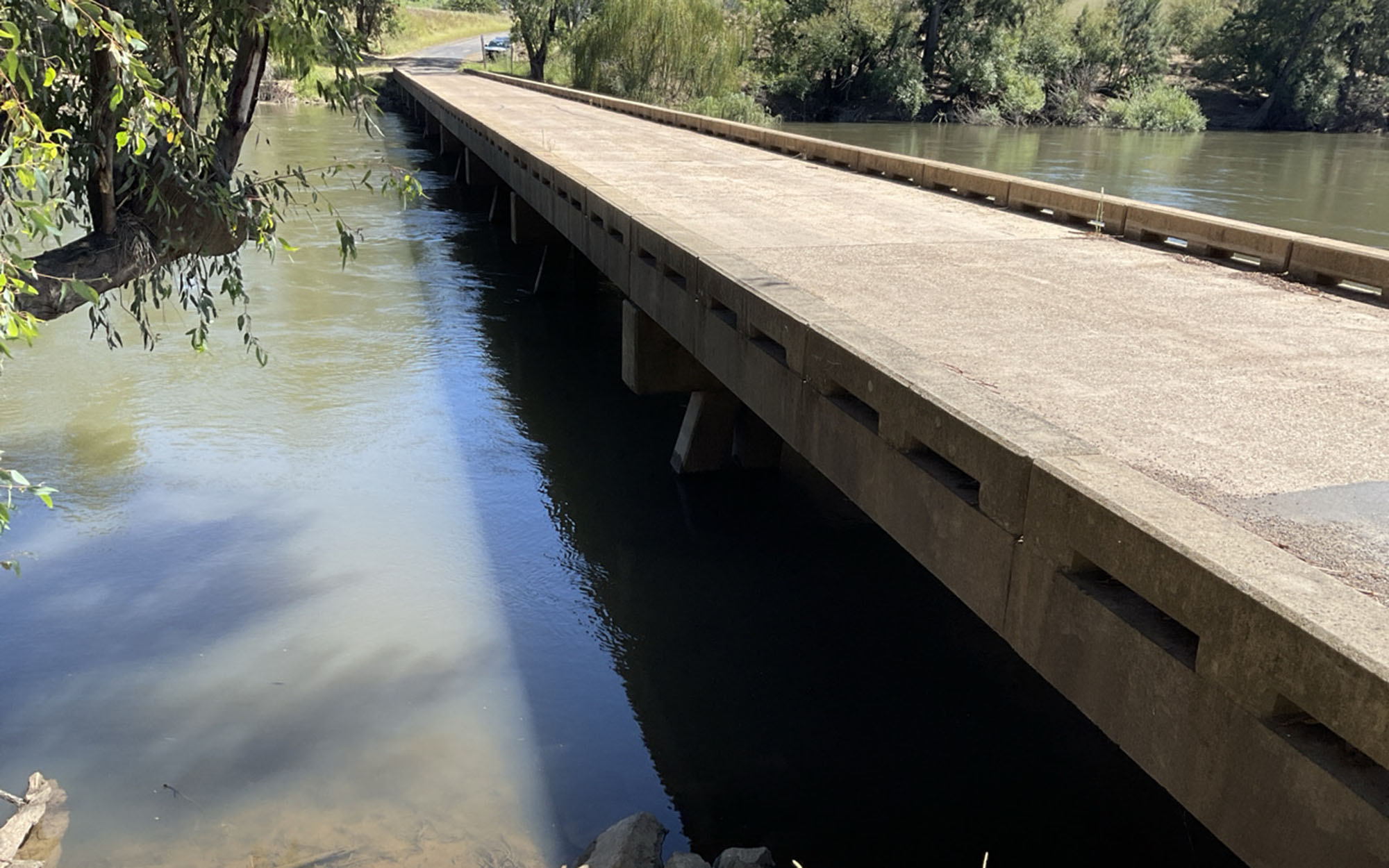About Mundarlo Bridge early works and measures package
A package of early infrastructure works and measures are currently being scoped for Mundarlo Bridge to enable the increased extent and frequency of environmental flows being considered by the program.
The program has identified Mundarlo Bridge as a barrier to delivering the higher environmental flows being proposed by the program along the Murrumbidgee River system.
The Mundarlo (or Tenandra Road) Bridge is a low-level single lane bridge located around 40km from Gundagai and approximately 60km from Wagga Wagga.
Due to the height of the current bridge, environmental flows are restricted to 32,000ML/day (5.01m) at Gundagai. Natural flows above this level result in the bridge being inundated, causing road closures and detours of up to 120km for local traffic.
As a result, the bridge is being assessed to be raised and widened as an early works package under the program.

Proposed concept design
To assess the feasibility of the package, the program is investigating the construction of a new, higher replacement bridge, as well as the realignment of approach roads if required.
The proposed new bridge would be an upgrade from the current one-lane bridge to a two-lane bridge with capacity to accommodate heavy vehicles, including farm machinery and B-double trucks. It is anticipated the new bridge would be approximately 110m long. It would be situated at the same site as the existing bridge.
The image below shows a potential, and preferred, location of the replacement bridge. However, this may change depending on feedback received from stakeholders and the results of design, geotechnical due diligence studies, environmental and other assessments.

Benefits of the proposed replacement
The benefits of the proposed new bridge would include:
- higher environmental flows, benefitting wetlands and floodplains downstream
- less overtopping in times of natural high flows, resulting in less disruption to local communities
- less servicing and maintenance on new infrastructure
- less maintenance/clean-up costs for the Cootamundra-Gundagai Regional Council as natural flows would less frequently overtop the bridge
- new two-lane bridge would improve traffic flow for cars, farm machinery and trucks.
Early works and measures limits
The frequency of managed environmental flows, enabled by the program, would vary over time depending on water availability, climate conditions, ecological priorities, and consideration of risks and impacts. These higher environmental flow deliveries would not occur during extreme wet conditions when there is elevated flood risk.
This package of works and measures will be designed to mitigate against flows up to, and including, the highest flow option (with buffer) being considered by the program. The package will not be designed to mitigate against natural flow events above this level.
Mundarlo Bridge early works and measures scoping
The program has commenced consultations with the local council to scope the proposed bridge replacement. The Water Group in the NSW Department of Climate Change, Energy, the Environment and Water will lead the preliminary bridge concept design and geotechnical survey work with the involvement of council staff.
Preliminary scoping works include:
- developing a service agreement with council
- developing concept and preliminary bridge designs and construction cost estimates
- undertaking geotechnical investigations
- conducting topographical and property boundary surveys
- reviewing environmental factors, including conducting biodiversity and cultural heritage assessments
- initial landholder, First Nations and stakeholder engagement.
Should the program proceed, further preliminary work would include:
- hydraulic modelling
- ecological, heritage and environmental studies
- identify areas and engage with landholders where land may need to be acquired for the new bridge location, if required
- power pole relocation, if required.
Contact us
For more information call us on 1300 081 047 or email us at: admin.rrcp@dpie.nsw.gov.au
